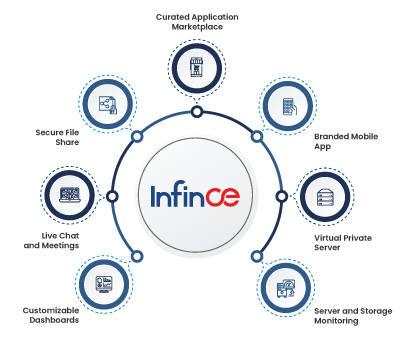Despite the soaring popularity of virtual meetings since the onset of the COVID-19 pandemic, researchers point toward the concern that virtual meetings aren’t as effective as the traditional, in-person meetings.
“Part of the problem might be that we’re worse at taking turns in virtual conversations than in physical ones.” (Stanford University, 2022)
“The number of meetings grew by 7.4% between June 2020 and December 2021, but the meetings were typically of low quality.” (University of Cambridge Judge Business School, 2022)
Many employees are annoyed with the amount of time lost due to technical issues, delayed meetings, irrelevant agenda, off-topic discussions, unpreparedness, and loud background noises. These challenges, however, cannot deny the fact that virtual meetings are here to stay. Gartner data shows that by 2025, 50% of all enterprise virtual events will be held on the video meeting platforms commonly used by organizations today, proving that video meetings are not likely to disappear from our workplace anytime soon.
What does it take to run an effective virtual meeting that facilitates collaboration, engagement, and communication between in-office and remote teams?
Common Challenges in Hosting Virtual Meetings
The use of virtual meetings in workplace can raise several concerns, some of the most commonly cited issues are discussed below:
- It can be difficult to pick up on non-verbal cues such as body language and gestures in virtual meetings. For instance, the meeting host or speaker may not be able to gauge whether other members of the meeting are puzzled, distracted or have lost interest.
- Video meetings can lead to Zoom fatigue, a unique kind of exhaustion that occurs when people participate in video meetings for an extended time period. The constant need to focus on screens, lack of breaks, and the difficulty in understanding non-verbal or social cues lead to fatigue and reduced productivity.
- Technical glitches that you have no control over, such as server or internet connection outages, microphone failure, audio problems, crashing of shared applications, or the trouble of logging into a virtual meeting.
- Many people prefer face-to-face, in-person interaction instead of virtual team meetings. Remote team members may not get enough time to bond with each other and build formal relationships. The result can be a lack of mutual trust which, in turn, can impact your team’s productivity.
- Scheduling virtual meetings could be a challenge when you want remote teams working from multiple locations and different time zones to join the meeting at a reasonable hour.
Best Practices & Tips to Make Your Video Meetings More Effective
1. Turn your camera on during virtual calls
In a prolonged remote work environment, your employees get only little in-person face time with their colleagues, supervisors, or managers. Keeping the camera on during virtual meetings will make your video conferences more accessible, exciting, and intuitive for participants.
By observing the facial expressions and body language of the participants during a video call, you can pick up contextual cues that are often lost over audio calls or text-based modes of communication such as chat or email. Encouraging your team members to turn on their cameras during video meetings can make them feel more connected, engaged, and productive.
2. Use interactive tools to increase engagement
Utilizing interactive tools like polls, surveys, quizzes, and breakout rooms during virtual meetings will allow participants to get involved as if they are all in the same space.
Breakout rooms are one of the most popular features in InfinCE video meeting platform that helps create a dynamic virtual meeting experience. Meeting organizers or hosts can use the breakout rooms to divide participants into smaller groups for focused discussions and effective collaboration.
InfinCE video meeting software allows you to create and launch polls/ quizzes during a virtual meeting and gather the responses from your participants. You can frame customized questions for your polls and see the results in real-time to make informed decisions or next steps.
Using the Raise a Hand feature in the InfinCE video meeting platform, a participant can notify the meeting host that they want to discuss a point without disrupting the flow of the meeting. All these tools promote better participation and collaboration and provide valuable feedback to the meeting organizers.
3. Allow short breaks between each meeting
Back-to-back virtual meetings can be stressful and decrease your ability to focus and engage. Participants should be encouraged to step away from their screens and take a short break in between successive meeting schedules. It prevents stress from building up.
Here are a few tips to make your moments of respite successful:
- View breaks away from your computer will help shift your mind and re-energize before joining the next meeting.
- A short meditation break or a simple physical activity such as a stroll will help you feel refreshed and recharged when you start your next meeting.
- Before scheduling a video call, do check if you really require a meeting to discuss the issue or if it can be solved through email, live chat, or document collaboration.
- Make your meetings more intentional. Create and share an agenda ahead of time, think about who attends the meeting, start and stop on time, and transition to a five-minute recap at the end of the call.
- Raise your hand, polls and quizzes, breakout rooms, and other interactive tools are great ways to keep your participants involved and elicit creative and strategic conversations.
4. Find the right balance between virtual and in-person meetings
Despite returning to normal after the pandemic, virtual calls continue to be a staple of the daily business routines. Though virtual meetings cannot completely replace face-to-face meetings for good, they are likely to remain as a part of our working lives as most businesses adjust to a hybrid way of working.
Here are a few tips to balance both in-person and virtual meetings:
- Choose the meeting type based on the topic or context. If you’re reaching out to a client for a quick check-in, a virtual meeting would suffice. If you want to discuss a major portfolio change or strategy adjustments, it’s better to meet in-person, if possible.
- Schedule virtual meetings and invite participants ahead of time to best manage your time and theirs, especially when you’re collaborating with remote teams located in different time zones.
- Gauge the complexity level of the issue you’re going to discuss. If you’re tackling a thorny problem that’s difficult to comprehend or is emotionally complex, it’s better to go for an in-person meeting.
- Finally, choose the meeting type that would be more inclusive. Consider your participants’ availability (proximity) for an in-person meeting. Check if they have a tight schedule that makes it difficult to find a common time for an in-person meeting. In this case, scheduling a virtual meeting can ensure maximum participation and inclusion.
The Final Word
In the post-pandemic era, the workplace could mean different things for different people. With the erratic work arrangements across companies, individual teams, and industry segments, workers need video meetings more than ever.
The real challenge for employers now is to foster true collaboration in a hybrid workplace setting by balancing remote and in-office employee experiences – and a video meeting platform is the key to achieving that.
With InfinCE, your organization can experience all the benefits and features of a modern digital workplace. Enable your team to work together from anywhere, using any device with our comprehensive virtual meeting software. Get started today.
Connect with our experts today or Request a Free Demo!





